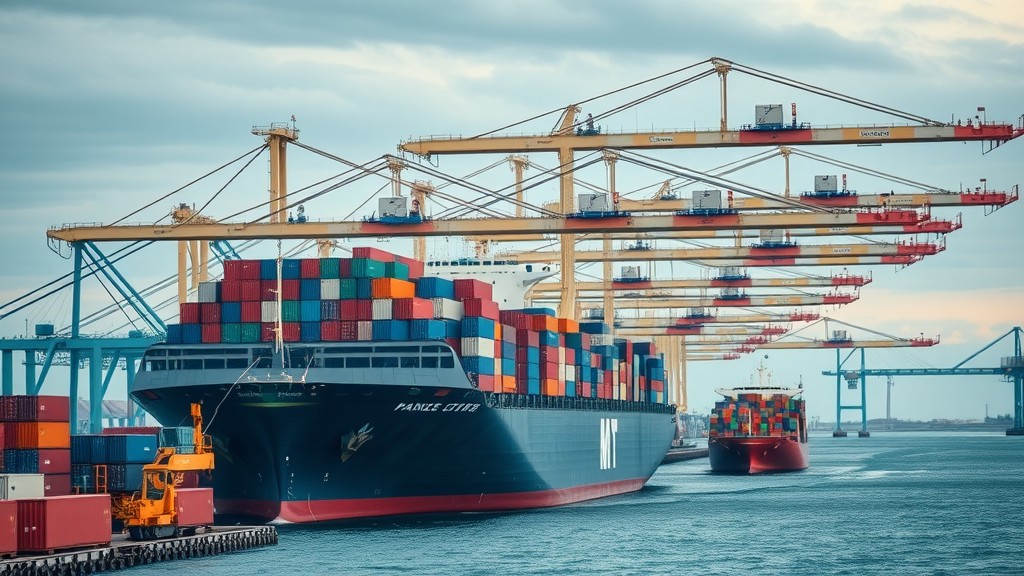Did you know that over 70% of small businesses for sale don’t receive their asking price? In today’s dynamic market—especially in competitive areas like Los Angeles—unlocking maximum value from your small business sale requires more than just a listing. This comprehensive promotional guide reveals the industry secrets, proven strategies, and actionable steps successful business owners use to get top dollar for their business. Read on for the tips and tactics that make the difference between settling—and selling for a premium.
Unlocking the True Value of Your Small Business Sale: Surprising Industry Facts
Did You Know? Over 70% of Small Businesses for Sale Don’t Receive Their Asking Price
The dream of selling your business for what it’s truly worth is widely shared—but often unmet. According to recent market data, over 70% of small businesses listed for sale end up selling below their initial asking price. The reason? Many business owners overlook critical factors like cash flow documentation, growth potential, and local market dynamics (such as those found in Los Angeles and other high-demand regions). By understanding why deals fall short—and how to position your business for premium offers—you set yourself apart from other businesses for sale.
"A well-prepared small business sale can increase closing price by up to 30%." – Industry Expert

These facts should motivate business owners not just to list their business for sale but to take strategic steps in preparation. With many buyers on the hunt for profitable business opportunities—especially those with strong cash flow, robust customer bases, and low overhead—knowing how to unlock and communicate your company’s value is the first step to exceeding your sale goals.
Maximize Your Small Business Sale with Strategic Preparation
Understanding Cash Flow: The Foundation of a Successful Small Business Sale
Cash flow is the lifeblood of any business and the key metric buyers analyze when assessing your business for sale. Before placing your Las Angeles business or any profitable business on the market, take time to accurately assess and normalize your cash flow statements . Highlight trends of steady or growing earnings and be transparent about costs. For service businesses such as pool routes or auto repair shops, demonstrating low overhead can greatly improve perceived profitability and buyer confidence, resulting in increased offers.
- Assessing and normalizing cash flow statements
- Demonstrating steady or growing cash flow to prospective buyers
- Highlighting low overhead to improve perceived profitability
Remember: buyers want to see proof that your business generates consistent income. If records show variations, be prepared to explain external factors or demonstrate steps taken to stabilize finances. For insurance agency or franchise for sale options, clean records underscore reliability—boosting buyer trust and helping to achieve your ideal asking price.
As you prepare your business for sale, it’s worth considering the advantages of working with a professional intermediary. Partnering with a business broker can streamline the selling process , help you avoid common pitfalls, and connect you with qualified buyers who recognize your business’s true value.
Identifying Growth Potential Before Your Small Business Sale
One of the fastest ways to add value and capture buyer attention is by showcasing your company’s growth potential . Buyers look for businesses—whether in pet supplies, auto repair, or niche service markets like Los Angeles—with scalable models and access to untapped customer segments. Highlight past growth and outline actionable strategies for expansion, such as entering new markets or diversifying services.
- Case studies from businesses for sale in Los Angeles and other markets
- Showcasing scalable business models
- Marketing untapped market segments, such as pet supplies or auto repair
For instance, a pet supplies business may demonstrate future value by leveraging its loyal customer base and introducing new product lines. An auto repair business might market a plan to expand locations or service offerings. Articulating your company’s growth potential not only helps you justify your asking price—it arms buyers with a roadmap for continued success.
Attracting the Right Buyers for Your Small Business Sale
Marketing Your Business for Sale: Reaching More Qualified Buyers
Getting the best price for your small business hinges on effective marketing that targets the right business buyers. Start by leveraging reputable business-for-sale listing platforms , which attract qualified buyers seeking opportunities like yours. For those located in high-demand areas like Los Angeles, targeted online advertising and region-specific outreach can yield stronger offers from buyers seeking a rare opportunity in a specific locale. Highlighting future profits, an established customer base, and franchise for sale options in your listings can set you apart from other businesses for sale.
- Leveraging business-for-sale listing platforms
- Utilizing targeted advertising, especially in high-demand localities such as Los Angeles
- Promoting existing customer base and franchise for sale options

The goal is to cast a wide—but targeted—net. Place your business on popular platforms, alert your network, and consider hiring business brokers skilled in your industry or locality. These approaches dramatically increase your chances of finding business buyers who understand your growth potential and are prepared to offer premium prices.
Highlighting Low Overhead and Profitable Business Operations
When buyers review businesses for sale, low overhead is a key differentiator—especially for service-based firms like pool routes, insurance agencies, or auto repair businesses. Draw attention to your operational efficiencies : point out lean staffing models, cost-saving technologies, and vendor relationships that boost your margins. Real-world examples prove this makes a difference; businesses with minimal fixed expenses regularly command above-market offers, as they promise ongoing profitability for their new owners.
- Real-world examples from service providers (pool route, insurance agency, auto repair)
- Demonstrating operational efficiencies to maximize appeal
"Buyers are looking for small businesses with low overhead and scalable operations." – Business Broker
Use testimonials and data to highlight recent cost-saving improvements. The more you can show your small business runs like a well-oiled machine—especially through documentation—the more you’ll stand out from other businesses for sale, giving buyers confidence and compelling them to meet, or exceed, your asking price.
Valuing Your Small Business Sale: Setting the Right Asking Price
Methods to Value a Small Business for Sale
Determining the correct value for your small business sale is both an art and a science. Buyers and business brokers typically consider three main methods: Seller’s Discretionary Earnings (SDE), EBITDA multiples, and asset-based valuation. Accurate business valuation ensures you don’t leave money on the table—and that your price reflects true growth potential.
| Valuation Method | Description | Best For |
|---|---|---|
| Seller's Discretionary Earnings (SDE) | Sum of profits, salary, and benefits | Small businesses with owner involvement |
| EBITDA Multiple | Earnings before interest, taxes, depreciation & amortization | Larger, more mature businesses |
| Asset-Based Valuation | Tangible assets minus liabilities | Asset-heavy businesses |

Consult with a business broker or valuation professional to determine the right approach for your industry and company size. Use a combination of annual revenue, recurring cash flow, and tangible asset assessment for an accurate, defensible price—especially in markets like Los Angeles, where competition and opportunity intersect.
How Market Trends Affect Small Business Sale Prices
Market trends can have a tremendous impact on the success of your business sale. Rising buyer demand for niche markets—such as pet supplies, insurance agencies, and auto repair businesses—can drive sale prices up quickly. Conversely, in slower markets, even high-margin businesses may need to lower prices or invest more time in marketing to attract qualified business buyers.
- Rising demand for niche markets (pet supplies, insurance agency)
- Fluctuations in buyer demand for businesses for sale in specific regions like Los Angeles
- Role of growth potential in final sale negotiations
"Market trends can shift the average selling price of small businesses by thousands within a year." – Industry Analyst
Stay ahead of trends by monitoring local and national sales data. Target buyers who are specifically looking for a business for sale in your category or region, adapt your pricing to market realities, and present evidence of growth potential to maintain leverage in negotiations. This approach maximizes your chances of achieving a top-dollar outcome in your small business sale.
Steps to Sell a Business: From Listings to Closing the Sale
Preparing Documentation and Boosting Your Small Business's Appeal
Selling a business successfully requires preparation that goes beyond listing. Begin by organizing all financial records , including tax returns, profit and loss statements, and proof of consistent cash flow. Next, create clear documentation of operational processes and cost controls, particularly if your business boasts low overhead or repeat customers. These steps not only impress business buyers—they can help justify a higher sale price and expedite due diligence.
- Organizing financial records and tax returns
- Presenting proof of consistent cash flow
- Creating evidence of low overhead and steady customer retention

Presentation matters. Provide potential buyers with a professional summary package that highlights the business’s strengths, including annual revenue, customer loyalty, and efficiency. For businesses like auto repair, pool route operations, or franchises for sale, a well-prepared information packet accelerates buyer confidence—and helps your business stand out in a crowded market.
Negotiating the Best Deal for Your Small Business Sale
Negotiation is where your preparation and strategic marketing pay off. Business owners selling in active categories—such as auto repair shops, pool route businesses, or pet supplies retailers—should anticipate multiple-offer scenarios and be ready to leverage competitive interest for superior terms. Work closely with a business broker familiar with your industry and use clear data on cash flow and growth potential to justify your price.
- Navigating offers for auto repair shops, pool route operations, and retail businesses
- Strategies for multiple-offer scenarios
- Leveraging competitive interest for better terms
Counteroffers can be a standard part of the process, but always stay rooted in facts and value. Highlight your business’s strengths—whether it is low overhead, scalable operations, or exclusive customer contracts. This focus empowers you to achieve the outcome you seek from your small business sale.
Handling Legal and Regulatory Aspects of a Small Business Sale
Successfully transferring a business requires strict attention to legal and regulatory requirements. For entities like insurance agencies and franchises for sale, licenses must be transferred accurately and efficiently. Compliance with local ordinances—such as those set in Los Angeles—and thorough due diligence are non-negotiable. Engage a reputable business broker or acquisition attorney, who can provide guidance on everything from asset transfer to contracts, ensuring a seamless transition for both parties involved.
- Transferring licenses, especially for insurance agencies and franchise for sale opportunities
- Compliance with state/local requirements, e.g. Los Angeles guidelines
- Working with brokers and legal counsel for a smooth transfer
"A successful business transfer depends on transparency and clear documentation." – Acquisition Attorney
Don’t underestimate the value of professional help at this juncture. A thoughtful legal approach ensures the deal is secure, minimizes risk, and prepares the groundwork for a profitable business handoff.
Success Stories: Profitable Business Sales in Los Angeles and Beyond
Case Study 1: Selling a Pet Supplies Business with Strong Cash Flow
One Los Angeles-based pet supplies business illustrates how a focus on growth potential and robust cash flow led to a fast and lucrative sale. The seller highlighted a loyal customer base, a scalable inventory model, and plans for e-commerce expansion. These factors caught the eye of a motivated buyer, who ultimately paid a premium for documented future upside.
- Highlighting growth potential and customer loyalty
- Strategies used for a fast and profitable sale

By promoting growth areas alongside proven profitability, this business for sale beat the averages—showing just how powerful the right strategy can be in today’s marketplace.
Case Study 2: Low Overhead Strategies from Successful Business Owners
Another success comes from a local service business that intentionally streamlined operations to keep expenses low. Leveraging remote staff, digital scheduling, and strategic vendor contracts, this owner minimized fixed costs and maximized net profits. When it came time to sell, the established efficiencies made the company irresistible to buyers seeking reliable income—especially in competitive markets.
- How a service business leveraged low overhead for a high-value sale
- Lessons learned from businesses for sale in competitive markets
This case underscores a crucial lesson: low overhead isn’t just good for business operations—it’s a powerful negotiating chip that increases your exit payday.
Essential Checklist: Preparing Your Small Business for Sale
- Audit your small business’s financials and cash flow
- Evaluate and highlight your business’s growth potential
- Gather relevant documentation for buyers
- Review overhead and implement efficiency improvements
- Plan marketing for optimal exposure

Use this checklist as your roadmap. Each step positions your business for the highest possible sale price and ensures a smooth process from listing to handover. Preparation, honesty, and strategic marketing form the foundation of a successful business sale.
Key Considerations for Small Business Owners Before Selling
- Assess timing and preparedness for a small business sale
- Weigh personal and financial goals
- Consider transition strategies for staff and customers
Carefully evaluating these factors before you sell a small business helps avoid surprises and build consensus. Whether your goal is retirement, reinvestment, or relocation to a market like Los Angeles, planning for both your needs and those of your employees and customers enables a smoother transition and sets everyone up for future success.
People Also Ask: Top Questions About Small Business Sales
How much can a small business be sold for?
The price of a small business sale varies widely based on industry, location (such as Los Angeles), annual revenue, and profitability. Generally, businesses are valued at two to three times their cash flow or SDE, but factors like growth potential and low overhead can significantly boost your final sale price.
How to sell a small business quickly?
To sell a small business quickly, focus on thorough documentation, highlight steady or growing cash flow, and market effectively through targeted business-for-sale platforms and business brokers. Offering clear, organized records and a compelling growth narrative attracts serious, qualified buyers faster.
How much do I sell my small business for?
Start by valuing your business using common methods like SDE or EBITDA multiples, then adjust for industry trends, your customer base, and regional factors (such as being located in Los Angeles or other competitive markets). Consulting a business broker can help set a fair and strategic asking price.
What is the average sale price for a small business?
The average sale price for small businesses in the United States typically ranges from $150,000 to $500,000, though this can vary with business type, location, and market demand. Specialized or highly profitable businesses can exceed these averages, while those with declining cash flow or unproven growth potential may sell for less.
Frequently Asked Questions About Small Business Sales
Which businesses for sale categories receive the highest valuations?
Businesses with recurring revenue, strong cash flow, and low overhead—such as insurance agencies, service businesses, and franchises for sale—often receive the highest valuations. High-demand categories like auto repair, pet supplies, and pool routes also attract premium offers, especially with robust customer bases and evidence of growth potential.
How does location, like Los Angeles, impact a small business sale?
Location can dramatically affect your small business sale. Markets with dense populations, strong economies, or industry hubs (like Los Angeles) tend to generate higher buyer interest and better sale prices. Regional regulations, cost of living, and local trends all influence how much buyers are willing to pay.
Can I sell a business with declining cash flow?
Yes, it’s possible to sell a business with declining cash flow, but you’ll need to be realistic about pricing and proactive in addressing buyer concerns. Highlight areas for improvement, operational efficiencies, and any recent changes that could reverse the trend; transparency and a credible turnaround plan are key.
Are there brokers specialized in small business sales?
Absolutely. Many business brokers focus on small business sales exclusively, often with expertise in certain industries or regions (like Los Angeles or high-demand service sectors). They provide valuation, marketing, negotiation, and legal support for a seamless sale process.
Download Your Comprehensive Small Business Sale Guide
- Get a step-by-step checklist for a successful small business sale
- Access proven marketing templates
- Claim your complimentary consultation with business sale experts
Ready to take charge of your small business sale? Download our free guide below and access tools, strategies, and expert advice to make your business-for-sale journey smooth and profitable.
Key Takeaways for Achieving Premium Value from Your Small Business Sale
- Preparation, accurate cash flow analysis, and marketing are crucial
- Target the right buyers for your industry and location, such as Los Angeles
- Highlight business strengths—low overhead and growth potential
Focusing on these core principles sets your business apart and increases the likelihood of a successful, high-value sale.
Start Your Path to a Successful Small Business Sale Today
- Connect with expert advisors and brokers
- Request your no-obligation valuation and marketing assessment
- Take action now to realize the full value of your small business sale
Don’t wait for the perfect buyer to come to you—be proactive, prepared, and informed to command top dollar for your business today!
Selling your small business is a major milestone, and the right guidance can make all the difference in your outcome. If you’re ready to take your sale strategy to the next level, explore how leveraging the expertise of a seasoned broker can unlock new opportunities and streamline every step of the process. Discover actionable insights and advanced tips in our in-depth resource on unlocking success with a business broker for your small business . Empower yourself with knowledge and move forward with confidence as you pursue the best possible result for your business sale.
 Add Row
Add Row  Add
Add 




Write A Comment